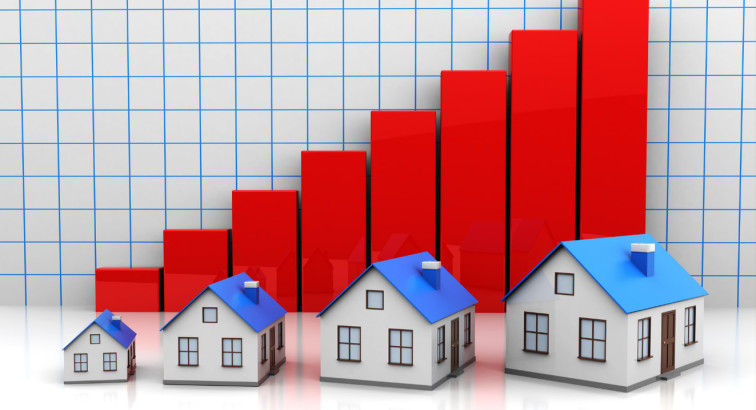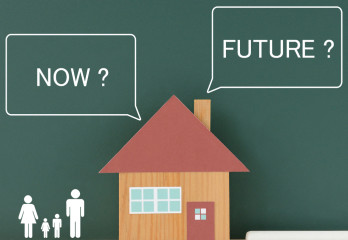Home Prices Keep Rising—Is This the New Normal?
As we find ourselves in March 2025, the U.S. housing market continues to defy expectations. Home prices remain at historically high levels, mortgage rates are elevated, and inventory remains tight despite a few recent gains. Many homeowners and potential buyers are asking: Is this the new normal?
The trajectory of the housing market over the past five years has been anything but predictable. Between the effects of the COVID-19 pandemic, fluctuating interest rates, rising inflation, and shifting demographic patterns, the market has seen a series of disruptions that have shaped the conditions we see today. What started as a market downturn in early 2020 quickly morphed into one of the most competitive housing environments in recent history.
For much of 2020 and 2021, home prices soared as buyers, fueled by low interest rates and the need for more space during the pandemic, scrambled to secure homes. The pandemic also triggered a massive shift in how people worked, with many embracing remote or hybrid work, which added to the housing demand in suburban and rural areas. The National Association of Realtors (NAR) reported that the median existing home sales price in 2021 surged by 16.9% year-over-year—the highest annual increase in over 15 years. While this surge was initially attributed to the demand from the pandemic, the upward pressure on prices has continued even as we move into 2025.
But today, even with mortgage rates hovering above 6.7% in early 2025, home prices have shown remarkable resilience. Many expected higher borrowing costs would put a damper on the market, but that hasn't happened. Despite elevated rates, competition for homes remains fierce. In part, that's due to the lack of available properties—homeowners who locked in low rates during the pandemic are less inclined to sell, further tightening supply. This, combined with strong buyer demand, continues to keep prices high. While some buyers may be priced out, the scarcity of homes on the market fuels a sense of urgency, propelling prices to maintain their upward momentum.
Why Are Home Prices Still Rising?
There are several interrelated factors that continue to prop up home prices. The housing market’s path has been largely shaped by the disruptions of the past few years, and as we look to 2025, it’s clear that many of these influences are not temporary.
1. Elevated Mortgage Rates and Buyer Demand
One of the most significant developments in recent years has been the dramatic rise in mortgage rates. After hovering near historic lows for much of the 2010s, mortgage rates took off in 2022, peaking at over 7% for 30-year fixed-rate loans. As of January 2025, rates are slightly lower, averaging around 6.71%. Though slightly improved, they remain high compared to the sub-3% rates that were common in 2020 and 2021.
At first glance, high mortgage rates would be expected to cool the market by pricing out potential buyers. However, many buyers remain in the market, willing to accept higher rates as they compete for the limited inventory of homes. Homeowners who purchased homes with low interest rates during the pandemic era are less inclined to sell and "trade up" in the current market, where they would face significantly higher borrowing costs. As a result, the number of homes on the market is restricted, and demand continues to exceed supply, even as higher rates might have softened demand slightly.
In essence, high mortgage rates have not necessarily reduced the competition for homes. Instead, they’ve led to fewer homes for sale, exacerbating the supply-demand imbalance and keeping prices elevated.
The Psychological Effect of Low Rates
For many buyers, the ability to lock in historically low interest rates over the past decade has played a significant role in homebuying decisions. Even though rates have risen, the appeal of owning a home is still compelling—especially for long-term buyers who consider a home as both a financial asset and a place to live. The housing market’s rebound, despite high rates, also stems from pent-up demand from earlier in the pandemic. Buyers who delayed their plans to purchase homes during the early pandemic years are reentering the market, further driving up competition.
2. Inventory Shortages: A Persistent Problem
The housing inventory crisis has been a defining feature of the market for years. Going into 2025, inventory remains low, and while there have been modest increases in the number of homes for sale—up by 14.1% year-over-year in some regions, for example—this still pales in comparison to the demand.
This inventory shortage can be traced back to a series of factors. The pandemic caused a surge in demand for housing, but it also led to construction slowdowns due to labor shortages and supply chain disruptions. Even as builders ramped up production, the cost of building materials skyrocketed, further complicating efforts to address the shortage. While there has been some recovery in new construction, it’s clear that builders are still facing obstacles in meeting the growing demand. According to the U.S. Census Bureau, housing starts (the initiation of new construction) remained well below the numbers needed to sustain population growth, exacerbating the ongoing inventory deficit. Moreover, many homeowners, as mentioned earlier, are reluctant to sell because of the higher borrowing costs associated with purchasing a new home. This phenomenon has led to what some experts call a “lock-in effect,” where homeowners stay put in their current homes longer than expected, further limiting the available housing stock.
3. Demographic Shifts and Lifestyle Changes
The housing market has also been heavily influenced by demographic shifts that have reshaped demand. The millennial generation—now in its peak home-buying years—has been a driving force behind much of the demand. As millennials transition into family life and seek homes with more space, the demand for single-family homes has surged, particularly in suburban and exurban areas.
In addition, the pandemic-induced shift to remote work has created new preferences for housing. More people are seeking homes in less dense areas, moving away from crowded cities to suburban or even rural locations where they can find larger homes at a relatively lower cost. This migration has placed pressure on areas that were previously not in the spotlight, further driving up home prices in these once-overlooked markets.
Baby boomers, too, have contributed to the tight inventory. Many older homeowners are staying in their homes longer, either because they are retiring later or because they are unwilling to downsize given the higher costs of buying a new home. This trend has reduced the flow of homes onto the market and has left fewer options for younger, first-time buyers.
4. Inflation and Rising Construction Costs
Inflation has played a significant role in the continued rise of home prices. Over the past several years, inflation has pushed up the cost of materials, labor, and land—all of which directly impact the cost of home construction. For example, prices for lumber, steel, and concrete saw sharp increases in 2021 and 2022, raising the price of new homes and adding to the overall inflationary pressures in the market.
While inflation has shown some signs of moderating in recent months, its impact on construction costs has been long-lasting. Builders are still facing difficulties securing materials at affordable prices, and the labor shortages in the construction sector have made it difficult to ramp up new housing stock to meet demand. As a result, the limited supply of new homes continues to keep prices elevated.
The impact of inflation isn’t just limited to new builds. Even in the existing home market, rising costs for renovation materials and home improvement projects have driven up the price of older homes. This creates a cycle where both new and existing home prices continue to climb, as homeowners seeking to upgrade or remodel are also facing high costs.
5. The Role of Investor Activity
Another key factor that has contributed to rising home prices is the increasing presence of institutional investors and real estate firms in the housing market. In recent years, private equity firms, hedge funds, and large-scale rental companies have been purchasing single-family homes in large numbers. This trend accelerated in the wake of the 2008 financial crisis and continued into the pandemic, as investors saw the housing market as a stable and profitable investment.
These institutional investors have further constrained inventory by purchasing homes that would have otherwise gone to individual buyers. By buying homes in bulk, investors often drive up prices in certain markets, making it more difficult for average buyers to compete. In some cases, these companies are holding properties as rentals, further reducing the number of homes available for sale. This institutional activity has been particularly pronounced in areas that were already experiencing rapid growth, where investors see the potential for long-term profits as rents rise.
In response, some municipalities have started to impose regulations aimed at curbing institutional investment in residential housing. But despite these efforts, large investors continue to play a significant role in the housing market, particularly in markets with high rental demand.
What’s Next for Home Prices?
Looking ahead, it seems likely that home prices will continue to rise in 2025, though at a slower pace than the explosive growth seen in 2021 and 2022. The combination of high mortgage rates, a persistent inventory shortage, and demographic shifts will continue to drive demand. However, as inflation moderates and mortgage rates ease slightly, the pace of price growth could slow.
For buyers, the new normal means adjusting expectations. The days of bargain home prices are likely behind us, and prospective homeowners may need to accept higher mortgage payments or look for less
competitive markets. For sellers, the current market remains advantageous, though setting a realistic asking price is key to avoiding long days on the market.
Ultimately, whether this is truly the "new normal" for the housing market remains to be seen, but the factors driving high prices—limited supply, strong demand, and external economic pressures—are not going away anytime soon. As such, both buyers and sellers will need to navigate the market with caution and strategic foresight.
Written By
Sam Wurm, Executive Vice President of Nebraska Realty and Embarc Realty



